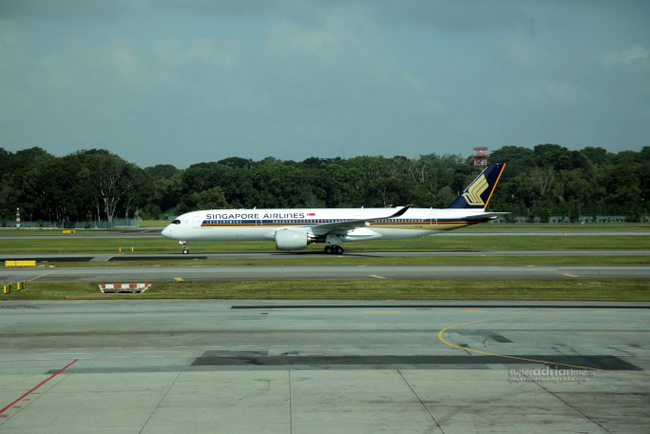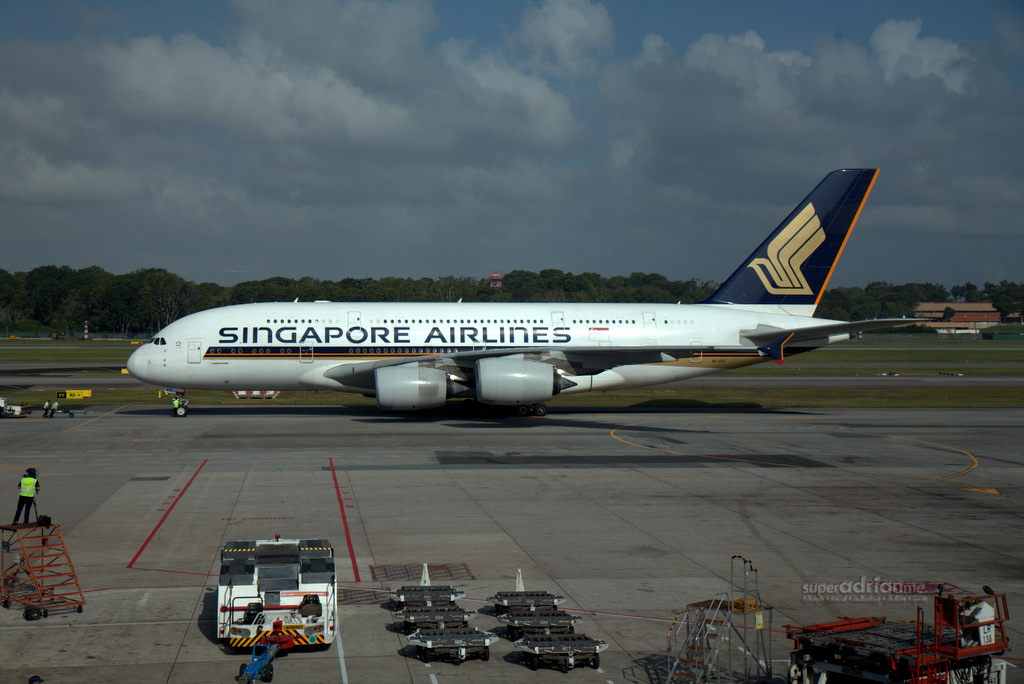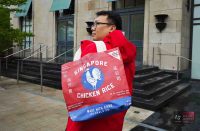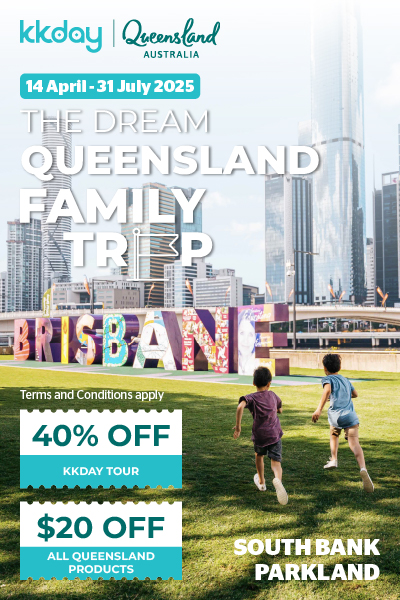
SIA Group has narrowed its first-quarter net loss to $409 million. Passenger traffic has increased as the SIA Group progressively rebuilds its network. Robust cargo performance continues to lead revenue contribution and the group is ready to seize revenue opportunities as borders re-open.
| Group Financial Results | 1st Quarter FY2021/22 ($ million) | 1st Quarter FY2020/21 ($ million) | Better/ (Worse) ($ million) | Better/ (Worse) (%) |
| Total Revenue | 1,295 | 851 | 444 | 52.2 |
| Total Expenditure | 1,569 | 1,888 | 319 | 16.9 |
| Net Fuel Cost | 360 | 155 | (205) | (132.3) |
| Fuel Cost (before hedging) | 373 | 84 | (289) | n.m. |
| Fuel Hedging (Gain)/Loss | (13) | 71 | 84 | n.m. |
| Fuel Hedging Ineffectiveness | – | 462 | 462 | n.m. |
| Fair Value (Gain)/Loss on Fuel Derivatives | (72) | 2 | 74 | n.m. |
| Non-fuel Expenditure | 1,281 | 1,269 | (12) | (0.9) |
| Operating Loss | (274) | (1,037) | 763 | 73.6 |
| Net Loss | (409) | (1,123) | 714 | 63.6 |
The Group’s passenger traffic (measured in revenue passenger kilometres) grew year-on-year on the back of a calibrated increase in passenger capacity (measured in available seat-kilometres), which rose to 28% of pre-Covid-19 levels by the end of the quarter in June 2021. The passenger load factor (PLF) for the first quarter increased 4.6 percentage points year-on-year to 14.8%.
An increase in both passenger and cargo flown revenue resulted in Group revenue increasing by $444 million (+52.2%) year-on-year to $1,295 million. Cargo flown revenue grew by $214 million (+32.4%), as the calibrated resumption in passenger flights contributed to an increase in cargo capacity (+46.9%) and loads carried (+68.2%). Cargo load factor increased 11.3 percentage points to 89.1%, while yields moderated from the exceptionally high levels during the same period last year. Overall, the strong cargo revenue performance for the first quarter reflected the healthy demand fundamentals and an ongoing capacity crunch in the sector.
Group expenditure fell by $319 million (-16.9%) to $1,569 million. Net fuel cost increased by $205 million (+132.3%) to $360 million mainly due to higher fuel prices, as well as an increase in the volume uplifted in tandem with the capacity expansion. There was a fuel hedging gain of $13 million, compared to a loss of $71 million for the same period last year. Mark-to-market gains of $72 million were also recognised on ineffective fuel hedges, reversing the $464 million losses recognised in the prior year. Non-fuel expenditure was at $1,281 million, up $12 million (+0.9%) as higher costs from the increased flying activities were partially mitigated by lower depreciation after surplus aircraft were removed from the fleet.
As a result, the SIA Group recorded a first-quarter operating loss of $274 million, an improvement of $763 million (+73.6%) from the $1,037 million operating loss recorded last year.
The Group reported a net loss of $409 million for the quarter, an improvement of $714 million (+63.6%) against last year. This was primarily driven by better operating performance and the absence of non-cash impairment charges relating to the liquidation of NokScoot.
The SIA Group completed the issuance of the Rights 2021 Mandatory Convertible Bonds, which raised $6.2 billion in additional liquidity, during the quarter. In total, the Group has successfully raised $21.6 billion in fresh liquidity since 1 April 2020.
As at 30 June 2021, the Group’s shareholders’ equity was $22.3 billion, an increase of $6.4 billion compared to 31 March 2021. Cash and bank balances saw an increase of $5.9 billion, rising to $13.7 billion primarily due to the issuance of Rights 2021 Mandatory Convertible Bonds. Total debt balances increased by $0.7 billion to $15.1 billion, attributable to the increase in lease liabilities as a result of sale-and-leaseback activities. Consequently, the Group’s debt-equity ratio fell from 0.90 times to 0.67 times. In addition to the cash on hand, the Group continues to retain access to $2.1 billion of committed lines of credit that remain undrawn at present.
SIA Group Fleet & Network
Three new A350s entered into service with SIA during the quarter. Two A330s were removed from the operating fleet for lease return checks. As at quarter-end, Singapore Airlines has 115 passenger aircraft and seven freighters as part of its operating fleet. The 115 passenger aircraft includes 23 B777-300ERs, 12 A380s, 55 A350s, 15 B787-10s, one A330 and nine B737-800NGs.
Scoot added its first A321neo aircraft while one A320ceo was removed for lease return checks. The A321neo made its inaugural flight from Singapore to Bangkok on 28 June 2021. This aircraft offers better operating economics with additional flexibility for Scoot to add capacity as demand returns. Scoot’s operating fleet as at end of the quarter consists of 49 passenger aircraft which includes 10 B787-8s, 10 B787-9s, 21 A431ceos, five A320neos and three A321neos.
The group expects passenger capacity to be around 33% of pre-Covid19 levels in the second quarter of FY2021/22. This is based on the group’s current published schedules. By the end of September this year, the group expects to serve around 50% of the points that were part of the passenger network before the onset of Covid19.
SIA re-instated services to Cape Town (via Johannesburg) on 1 July 2021, as well as services to Manchester and Rome (via Copenhagen) from 16 July 2021. Scoot re-introduced flights to Sydney from 6 July 2021 and will resume flights to Berlin (via Athens) from 10 August 2021 pending regulatory approvals.
Paving the Way Ahead
A strong balance sheet and access to liquidity provide SIA Group the resources to navigate the crisis at hand. During the quarter, SIA became the first airline to offer live in-flight online shopping when KrisShop’s e-commerce platform became available via the KrisWorld in-flight entertainment system.
All frontline ground staff and around 98% of the active pilots and cabin crew in the group have been vaccinated.
The group continues to pursue initiatives towards decarbonisation and environmental sustainability across its operations. During the quarter, the group committed to achieving net-zero carbon emissions by 2050. Investment in new generation aircraft will reduce fuel burn by up to 30% versus prior generation aircraft on comparable missions. It will adopt low-carbon technology such as sustainable aviation fuels and carbon offsetting. A voluntary carbon offset programme was recently launched allowing SIA and Scoot passengers as well as cargo customers to offset their emissions.






